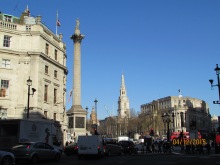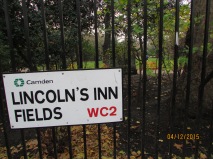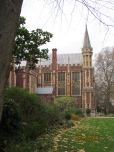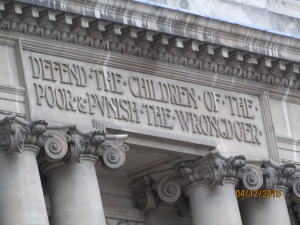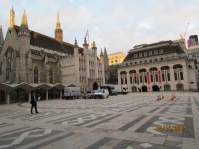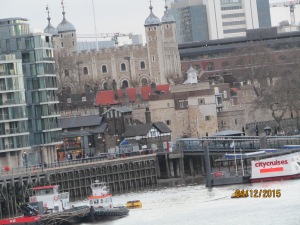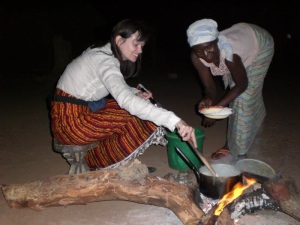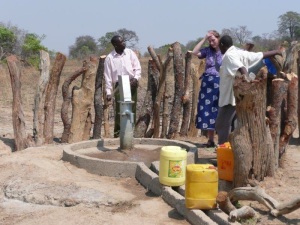A Trip to Zambia with Tearfund
by Anne E Thompson
Diary of Trip
Saturday 6th October: Landed in Lusaka. Flight here very long. Lots of people on flight with personal hygiene problem.
Met Chris, who was going to drive us. He worked for a charity that Tearfund was linked to. He was small, black and laughed a lot. He seemed to find us very amusing.
Dumped stuff in hotel, then went to a parade of shops. Everyone very black. Felt very white. We were stared at, which felt uncomfortable.
Bought some beautiful African print material for very little money. My first impression of Lusaka was that it was like one huge motorway service station. It had the same transient feel to it, as if no one actually lived there or cared about it.
We visited a local church. One of Tearfund’s aims is to work through local churches. Many people in developing countries live miles away from any health care or support network, but there are small churches everywhere. If Tearfund can mobilise them into action then they can reach and help many more people.
We were introduced to a group of women who were working in their community. They visited ill people, checked on orphans, helped with food etc. It seemed to be the women who provided practical help however, it is the men who were more influential because people listened to them.
We also met a group of pastors from small churches. They wore very white shirts but the general body smell in the room was not good. Everyone sat on hard chairs in a big circle and I was bored. I was tired, hungry and uncomfortable. Inclined to daydream, I did not listen to the introductory speeches and then had no idea what everyone was talking about. It all had to be explained to me afterwards. I began to doubt my ability to do ‘mission trips’, it was feeling a lot like a business meeting.
I later learnt that previously the pastors had been preaching that AIDS was God’s punishment for promiscuity. Now however, they were trying to remove the stigma from those with AIDS and were encouraging their members to get themselves tested and taught them how to avoid catching the disease. This is such a complete turn around for them but vitally important. Most of the people here who are infected are women who have always been faithful to their husbands. Men tend to be more promiscuous but they can have several wives and so can infect a whole family plus their children. If the church condemns all AIDS sufferers, then it is not offering any help to the very people who need it most.
The men sat and talked to us. The women took us out. We sat in the front of the truck and they all piled into the back. There was lots of laughing and loud voices. I felt they were strong brave women who were fighting to change what they could. This was more of how I had envisioned a ‘mission trip’ and I had renewed enthusiasm! We showed them the material we had bought and they showed us how to tie it into skirts. It felt very insecure so I decided to wear my normal skirt underneath!
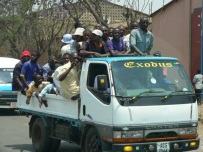
We visited some of the people they were helping. First we went to a white stone house that looked a lot like my garden shed. Inside, it was very dark and very hot but it was clean and did not smell horrid. It had a television, which felt rather incongruous amidst so much poverty. A woman lived here with her grandchildren. Four of her seven children had died of aids and their orphaned children now lived with her, despite her being HIV positive. One of the children was also HIV positive, the others had not been tested.

You could see she was ill, she looked like her very bones were tired and she sat wilting on the sofa. I could not imagine how she coped with seven energetic grandchildren, who looked to be aged from about twelve to a chubby baby of about a year. She twisted rags together to make rugs to sell. Often she did not have enough food, which is one of the ways the church ladies were helping her. The children were great fun and found us hilarious. They were very keen to be photographed and then crowded around to see their image on the screen.
The child who was ill was taking ARV tablets. These did not cure AIDS but they help to stop some of the symptoms, so in this case, the child who was tiny had started to grow again.
The pills were very big and they were hard for a child to swallow. In 2007, there was no syrup form available, I have no idea if there is today or if children are still gagging as they try to swallow life-saving medicine.
I was told that the strength of the pills meant that eventually, they would cause irrepairable damage to the body. However, in the short term they were extending life and definitely improving the quality. This is hugely important for parents. If they can prolong their life long enough for their children to be old enough to care for themselves then it adds a lot of security.
The next home we visited was run by teenaged orphans. Their parents had died and they were living together in the family home. The church ladies checked regularly that they were eating properly, attending school, keeping clean. This is so much better for the children than being split up and sent away.
We heard that there are many many orphans in Zambia due to AIDS. My initial reaction was the same as one American charity we heard about. They sent lots of money and built a beautiful orphanage, fully equipped and staffed. However, Zambian people do not use orphanages and the costly building remained empty. I realised that my own reaction to Africa was not dissimilar to those white missionaries in ancient times who taught everyone to speak English and wear hats. To really help, you have to understand the culture and provide aid that is appropriate, not necessarily what is nice to give.
In Zambia, when parents die, their children are usually sent to a relative. Then, when this relative also dies, they are sent to a more remote relative. Often people are left to look after many children, some of whom are quite distantly related, and the level of care is erratic. No one who cares about the child knows where they are. In the meantime, the family home is sold (I assume the money is taken by the first carers.)
As the child is passed from relative to relative, they become increasingly isolated. Then, when they are old enough to care for themselves, they have nothing. Their home has been sold and they have no entitlement.
However, if when they are first orphaned, they can stay in their family home, then that possession is always theirs. When they leave school, they have a home, often with a garden where they can grow food. This is one of Tearfund’s initiatives. They hope to encourage local churches to enable orphans to remain in the family home, regularly helped and advised by church members.
We visited another home in Lusaka. There was a comfy sofa, a television and DVD player. But the house was very hot, with insects running up and down the walls and no storage cupboards so all the possessions were heaped in corners. I could not come to terms with the disparity between poverty and ownership of electrical goods. It was hard to understand why someone who had so little would strive to own a television above other things. Maybe it is a way to escape. The lady who lived here had suffered from depression when her husband died. The church ladies visited her and persuaded her to be tested. She found she was HIV positive and began taking ARVs, so was much healthier and able to take care of herself and her son.
As we drove around Lusaka we caught glimpses of what life was like. There were many corner shops, which were really just a table placed at the edge of someone’s land where they can sell excess produce. They were often manned by children who grinned widely when they saw us and posed for photographs with their friends.
Many children had toys they had made themselves from old tyres or pieces of twisted metal. Many of the houses had a water hole in the garden. A bucket on a rope was used to haul the water up to ground height. It was used for washing and cooking and had to be boiled before it could be drunk.
There was litter everywhere. Everyone seemed to keep their own space clean and tidy but along the roadsides were empty cans, pieces of paper and cloth, all just discarded.
As we drove from Lusaka to Choma we saw many things. You could not even for a moment forget you were in Africa. I have driven around many suburbs in the world – Singapore, Rome, Dubai, New York and they seem ubiquitous. You can almost imagine that you are anywhere, they seem interchangeable. Not so Lusaka! I did not see any major food chains or dress shops. Even the roads, full of pot holes and often just hard packed red mud were different.
As we left the city we watched the scenery move past us. There were men sitting beside the road, bashing rocks with mallets to make shingle, men selling bricks, women smoking wood to produce charcoal for cooking, trees that appeared to have roots that extend skyward and branches that sink into the earth. Red mud. Dried grass. Lines of people walking along the road, the women carrying plastic bowls of goods on their heads. Thatched roofed mud huts clustered into villages.
Monday: We arrived in Choma. We were staying in a guesthouse/hostel. It was very simple but clean and felt safe.
We had an oatmeal breakfast with a missionary couple from the US. They have been here a few years and one told me she was lonely and wanted to go home to PA. She had no white friends and missed her family.
We then went to meet the Bishop who was the main contact for the village where we would be staying. He was a large, tired looking black Zambian. We later learnt that he was suffering from malaria. We crowded into his little office and he sat behind his desk and gave us some advice.
He suggested that we should take some foam mattresses to sleep on and then leave them there when we leave so our hosts could use them. We were told to take enough bottled water for the visit. We were told that there was some cell phone coverage but it was intermittent. However, there was no electricity so we would be unable to recharge our phones until we returned to the town. We were told that only women carry objects on their heads, unless the load was extremely heavy (but it was rare to see a man carrying things on his head.) Women tend to be known as “mother of …” rather than an individual name.
The Bishop told us that they had heard there was a married couple in our group. They had therefore changed the original arrangements as they realised that the wife would want to stay in the same village as her husband so she could take care of him. David was very pleased by this news. Hmmm….
We were also told it was polite, when given food, to leave a tiny amount on the plate. This indicates that we have eaten all we can without being wasteful. If we completely finished a meal, we would be offered more until we reach saturation point!
We went back to the hostel to pack small bags with the clothes we would need at the villages and then we set off. We soon left proper roads and bounced along in the landrover along red mud roads filled with ruts and holes. We arrived at the main village and taken to the church. The village consists of huddles of straw roofed mud huts. The church was full. There was some singing and then a formal report on the work that has been achieved with the charity’s help. Some children danced for us and then presented us with flowers.
David and I were then driven to the pastor’s house, as we are staying in his village. The pastor’s house was another mud hut. I think that each ‘village’ is actually made up of family groups. When a child is too big to sleep in their parent’s hut, they are given a hut of their own. There are also huts for cooking and for washing and for the toilet pit. The space between the huts is a living space and is kept free of litter. The family and their animals all occupy this same space. We could not see any other ‘villages’ from the pastor’s group of huts. In the pastor’s hut was an area for sleeping and another with a wooden table and chairs.
We were given chairs and cups of tuwantu. This looks like thin white emulsion paint with bits floating in it. It is actually made from a plant root and we were offered brown sugar to add to it. It tasted like watery yogurt. Luke warm watery yogurt. Drinking it required some effort.
The house smelt of charcoal. There was a slight breeze wafting through the unglazed window but it was still very hot. There were lots of flies and we sat and listened to hens and turkeys foraging outside.
We were given a hut of our own to sleep in. We set up our pop up mosquito tents and rested. It gets dark very early here, by 6:30 it is pitch black.
After dark, the women cooked. They spoke in low voices, laughed and sang, all while sitting around the fire and cooking. They have amazing sight, I could not see anything unless I used a torch. They had one fire and pull the ash across onto other dishes to heat them. Unlike bonfires I have had in England, they did not use lots of small sticks, but rather two or three large logs. These smouldered together and as they burnt, the women kept pushing them together to maintain the heat. They frequently wash their hands and utensils using water from large containers which they have carried to the village earlier. It seemed a special time, with lots of cooperation between the women. A younger woman was feeding a baby and teenaged boys hung around watching and playing with a football. They teased me and told me to watch carefully because tomorrow I would be cooking!

They then served the food on dishes and the men (and me, as a guest) went into the house. We washed our hands in a chipped metal bowl of water, then rinsed them from water in a jug (which we took turns to pour for each other.) We then used our nice safe hand santisers which we had carried from England. Later, someone asked me if I had offered the hand sanitiser to our hosts. I hadn’t and had actually used it surreptitiously, fearing I would offend them. How silly! It would have been much better to use it openly and offer it to everyone.
We ate sitting at the table in the pastor’s house. There were chicken pieces in a sort of soup, rape (very like chopped cabbage) and mapawpwee, which is a maize cooked until it is thick. (I am making up these spellings! Although the official language is English, the family speak an African language. The pastor speaks very good English but the names of the food are all in African.) The women stayed outside and ate their meal sitting around the fire. There seem to be very clearly defined roles for the different genders.
The women had prepared a bowl of warm water which they put into the ‘bath house’ for us to wash. This was another mud hut with a drainage area and a curtain across the doorway. I also used the toilet hut (it is amazing how long one can avoid using a toilet for when necessary.) This was a small mud hut with a straw roof but no door. It faced a large termite hill away from the village, so there was some privacy. There was a broken cover over a small hole. When the cover was removed, swarms of flies escaped from the pit below. It was not a place where one would want to linger….
We zipped ourselves into our mosquito net tents and settled down for the night. I used copious numbers of wet wipes to wash myself, then had nowhere to throw them so had to put them back into my bag to take back to Choma when we leave.
There seemed to be no rubbish disposal here. Any waste food was fed to the animals and they did not really have packets or bottles of any kind. The perimeter of the village was full of litter, so maybe if they do have rubbish they just throw it there. Zambia looks untidy when driving through it because of all the litter surrounding each village.
Tuesday: I got up soon after dawn. The temperature was perfect: warm with a slight breeze. The women were busy sweeping the living area with brooms made from twigs. I asked if I could help and was given a brush, but it kept falling apart in my hands.
There was lots of rubbish to sweep away – animal droppings, crumbs of food, a broken plastic pen case and an abandoned flip flop. One woman pounced on the flip flop and started to talk loudly. I did not need to speak her dialect to understand her, I am a mother, I had teenagers, I knew exactly what she was complaining about!
There was already a fire burning and the women had heated water so we could wash. As I swept, I saw school children file past in their navy blue uniforms. They walked one behind the other, carrying their books and bottles of white tuwantu for their lunch.
Schools here were free but children had to wear the uniform to attend. If a family was too poor to afford several uniforms, the children would share, with one sibling attending school in the morning and then switching at lunch time with their brother or sister who would change into the same clothes. I can just imagine the comments if I suggested my children might like to share clothes……
The animals wandered around freely. The turkeys and hens all roosted in the trees at night and they seemed quite content to share the ground with dogs, cats, kittens, pigs, goats and cows during the day. They were part of life here and wandered in and out of the huts. It gave an added incentive to keeping our ‘bedroom’ door shut!
I found the people to be quiet and dignified. They greeted us with smiles and handshakes and a half curtsey. The women were beautiful with dark skin and clean bright clothes. I still do not not know how they managed to wear clothes that looked clean and ironed when washing involved a bowl of water heated over a fire. The children were delightful. They smiled with wide mouths and delighted eyes and loved to see themselves in photographs. The elderly and the sick moved slowly and carefully. They listened and nodded but said little. Around them, life seemed harmonious.
It was hard to accept the impact of AIDS here. Both our hosts were HIV positive. Most people who we saw were younger than us. It was odd to be the eldest people we saw in a country when we were only in our forties. I knew that life expectancy in Zambia was 35, it was altogether different to actually experience that.
I saw some cows being milked (this is the first job that I saw a man do – I was wondering what they did!) They tied together the cow’s back legs first, then milked it into a plastic bucket.
Some men arrived in a white truck. They had come to collect an ill cow, which needed to be taken to Choma to be killed. The calf had died inside it and they couldn’t abort it in the village. There were also two women with their young children, little boys who I guessed were aged about two. One was still feeding from his mother. One had scabies on his foot (open sores which were weeping). He wasn’t wearing any shoes or socks and I feared the wound might become infected. I sat with them in the shade and they tried to teach me some words in their language and laughed at me.
The men tied the cows legs and put it into the back of the truck. I don’t think the truck had any brakes because they had put stones behind the wheels to stop it from rolling away. When it was time for them to leave, they push-started it, then several people jumped into the back, with the cow, to get a ride into Choma. The two women also jumped into the back with their children. They had planned to ride into Choma and then get the bus to Lusaka.
We were then called into the house for breakfast. They poured very milky tea out of a teapot (it looked like milk, there was hardly any tea in it at all.) We had it with bread and scones. The scones were sweet and tasty. We ate with Chris, our driver. I didn’t see the other people eat anything at all, though some were drinking tuwantu (I was very relieved not to be offered any.)
After breakfast, I washed up. This involved several bowls of water. One had detergent in for washing, then two others were for rinsing. It was all done on the floor with animals walking around. I had to keep pushing the pig away because he wanted to drink the dirty water.
David talked about football with the boys. They all supported English teams. He gave them a football and they played with it, doing tricks and laughing. One of them asked David if he could send him some football boots when we are back in England.
We visited a school. About three hundred and fifty children attended, split between seven grades. They had to pass each grade before they moved up, so the ages were mixed. There were about forty or fifty children in each class. Thirty-two is the recommended number. Their day begins at 7am, with a lunch break at 14:40. They then have afternoon activities until 16:15.
The school’s motto was: When people throw stones at you, use the stones to build a house. I loved this, and later modified it for my own twitter slogan!
My impression of the school was not great. It was a large white building, with lots of blue clad children milling around. The classroom we were shown to had a lot of broken furniture heaped at the back and some children were sitting on the floor. These people were skilled at building their own houses, I could not understand why they had not moved or repaired the furniture. The children themselves were teenagers and some of them looked big enough to help move the rubbish. I could not imagine teaching in that room, if I were the teacher there, my first lesson would be to clean up the classroom.
I later wondered if the rubbish had been placed there for our benefit, to try and make the school look neglected so we would give them some money. This was something I found very difficult in Africa, (this, and the toilet facilities!) I was not used to people asking me for money so blatantly and it felt uncomfortable.
The children all walked to school. Some had to leave home at 4am to be there on time. They must have been exhausted before the day even began. They were taught Zambian literature, maths, science and English. All the lessons were conducted in English, the official language in Zambia. However, most of the children could not understand even quite simple phrases. This seemed such a waste. They had walked so far, in uniforms they could barely afford, to sit in a broken classroom and hear words they could not understand. I found this immensely frustrating. Why were they not being taught food hygiene, how to avoid catching AIDS, some basic science that could help them grow crops and conserve water, their Zambian history, some Physics, etc etc etc? It made me very angry.
The government owned this school. They had a lot of policies. It was regularly inspected but they were not given any feedback. I decided that my own feedback was probably also inappropriate to share.
After grade 7, the children could apply to another school. It was a long way away and they would have to walk, cycle or hitch a ride. Not all the children would go there. Many would fail due to financial problems or their parents would choose to keep them at home. If the parents had AIDS (which was common) then they would need the children to help at home.
Before we left the school, the head teacher took our group leader aside and gave her a list of improvements that he would like Tearfund to pay for. When I asked her about it, she said she did not consider that they were areas that Tearfund would help. I found this to be very reassuring. When I give to a charity, I want it to be wise with how it uses the money. It would be very easy to give to whoever asks for help, but actually, this is not always the best use for the money.
We then visited a family. The husband had died of AIDS, leaving both his wives widowed and several children. We sat in the shade with them and helped them to shell nuts. Their English was good and we could chat. They talked about missing their husband, about every day remembering again that he had died, feeling the hurt as a raw pain. I found this to be poignant. Sometimes when I watch people in developing countries on the television, it seems almost as if they have grown accustomed to death. When they have lost so many friends and family members, I can feel that they must not feel the same agony that I feel when I lose someone who I love. I can so easily forget that their love is just as strong as my love, their loss hurts as much as mine.

Our lunch was tuwantu. I just could not manage to swallow any, which was very embarrassing. It made me gag. There was nowhere to dispose of it and a nearby chicken showed no interest at all when I offered it. I tried pouring some on the ground but it left a white puddle which our hosts would have noticed. I then got the giggles (feel I had failed being an aid worker several times already.) In the end, had to just leave the unfinished drink coagulating on the table.
We visited the Bishop’s mother and when we left she gave us a chicken as a gift to thank us for visiting. Not a butchered one, wrapped in cellophane, but a living squawking one. We gave it to the pastor, who assured us that it was a good gift. David named it Lindsey, after our team leader (not entirely sure she appreciated the gesture.)
We were given scones and salad at tea time. The meal times came round with awful regularity. The scones were delicious and the salad looked good but we daren’t eat any because it would have been washed in local water. Had another attempt at feeding it to a chicken but a dog kept chasing it away.
I used the toilet. This was not a pleasant event. There were two footprint markings where you placed your feet and then you perched over a stinking hole swarming with flies. I was thus precariously poised when I heard a cough and footsteps coming nearer. There was no door to the hut and I quickly calculated how quickly I could cover my embarrassment (and everything else) when the footsteps arrived and a pig stuck his head in the doorway. I nearly fell over with shock (which would have been very bad indeed.)
In the afternoon, the women went fishing. A group of them had obtained permission from the head man and they all went together. They all stretch out across the river with their cone shaped nets, walking upstream to catch the fish. I wanted to join them but the pastor took us visiting again.
We drove with the pastor to visit a lady. She was HIV positive and taking ARVs. The pastor asked her to show us her pills, which she did. Then he asked her why she had so many left, as she should have taken more by then. She explained that the clinic is eight hours walk away. She collects a months worth of pills and is meant to take one in the morning and one at night. However, if she only takes one a day, it means she does not have to walk all the way back to the clinic for two months. The pastor explained to her that the reason she was feeling so weak and tired was because she was not taking the correct dosage of medicine. If she took two a day, she would have more energy. This was very important because most of her food came from her garden. If she was listless all day and did not tend her plants, she would then not have enough food.
It was interesting to see the pastor following the training that Tearfund were implementing. These people did not have social workers and health visitors. If the local church were able to pass on advice and check that people were coping, it made a huge difference to their well being.
We went to see the pastor’s garden. This was more like an allotment or small field. It was next to the river so he could easily water the plants. He grew lots of vegetables and also herbs such as aloe vera, for their medicinal qualities. The garden had to be guarded, usually by a boy, to keep cows from wandering over it.
We ate very well while in the village. It interested me at how well the people here ate. We often heard that people in these places exist on less than a dollar a day but that seemed a fairly meaningless statement. There was nothing there to spend a dollar on! People grew their own food and raised their own cattle and made their own houses and furniture. If nothing went wrong, it was not a bad life style. It was different to life in England but I am not sure that it was worse. Yes, there were hard things, but there were lots of excellent things too.
The thing that threw everything off kilter was any kind of disaster. If people were ill (and many were due to AIDS) or if there was a change in climate, then they had no back up plan. There were no safety nets.
We visited a dam that Tearfund had sponsored. It looked like it was in the middle of a dried up field but they told me that during the rainy season it is on the river.
The women walked to a bore hole to collect water. It was about a ten minute walk from the village. They helped each other to lift the heavy plastic containers onto their heads, then walked back laughing and chatting. I tried to help but could not even lift a full container off the floor. Their necks must be incredibly strong. They told me that they walk in a line, one behind the other, so if anyone drops their load it does not fall on the next person. Sometimes the 14 year old boy would collect the water on his bike (but I have no idea how he manages that.)
In the evening, I cooked the mapawpwee (with a lot of help.) I do not know how they could see anything, it was pitch dark. It was quite an art to stir a pot over an open fire without getting burnt while your skirt flaps towards the flames. I kept losing all the utensils because it was too dark to see them.
We ate the fish for supper. They were like sardines, small and fried whole. They were crunchy but not unpleasant. They were served with the mapawpwee, rape and tomatoes. I would have liked to eat outside with the women but I think that would have been odd, so ate at the table with the men again. It felt very strange being seen as a ‘special’ guest and I had to keep asking if I could do things if I wanted to spend time with the women.
There was more milky tea from the large pottery tea pot. The pastors wife had made it. It reminded me of a brown tea pot my Granny had had when I was little. We went to bed, completely exhausted. Outside we could hear everyone else sitting around the fire, talking, laughing. In the morning, they told me that Chris had put on music from the car radio and danced with the children. It sounded like a party as we drifted off to sleep.
Wednesday: Got up 5:30 and helped sweep.
Then washed up the crockery and pans from last night’s meal. The women showed me how to use sand from the ground to scour off the stuck on bits, then everything is washed in a bowl with detergent and rinsed twice.
Went into ‘bathroom’ (hut with a curtain across the door) and washed. The women use a pumice stone to rub dirt off skin, then rinse in water warmed over the fire. A chicken came in and watched me.
Chatted with Bertha while she fried fritters. It was interesting watching her cook. She had a place for everything: spoon gets stuck into the straw roof, uses a bunch of leaves to lift hot pans so she doesn’t get burnt and so on. It was very efficient. She was cooking ‘inside’ because it was windy. This hut had half walls and a thatched roof. Breakfast was bread and fritters. Very nice.
We drove to see a couple of dams, a new church that is being built and a new bore hole for water.
Went to church. Women sang (brilliant!) It was nice to see lots of people who we recognised from our visits. I felt a real bond with the women. Our interaction had mainly been them trying to teach me Tonga and then laughing, but I realised that our day to day focus was very similar (childcare and meals) even if the mode was different.
Lindsey did a talk, which was translated and then the school children sang (they looked very fed up!) We were presented with a basket of groundnuts. Then we stood outside and everyone filed past and shook our hand. When they shake hands, the left hand holds your elbow, then they squeeze your hand, then link thumbs, then squeeze hand. If we wanted to show respect to an older person we also did a dipped curtsey.
One man said to me, “When you go back to England, you may forget us. But never forget that we are part of the same church. Tell people at home, God has one church. The part in Zambia is part of you. We need your help.”
We had chicken and rice for lunch. I got to hold a baby. I told Rosebunda that when I was small, I had always wanted a black baby. She laughed and said she had always wanted a white one! We held our arms together and compared skin colour. She was so dark, I felt pasty beside her.
Drove to Choma and went to a supermarket. Shopped in a Spar. It could have been an English supermarket except for the big sacks of maize down one side and the security guards on the door.
We went back to the guest house. It now felt very luxurious. Flushing toilets and showers. Aaaagh.
Thursday: We had breakfast with the missionary couple.
The ‘work’ bit of the trip was finished and we all wanted to rush off to Livingstone for some sight seeing. But nothing happens quickly in Africa. We went to say goodbye to the bishop. It took ages. More photos. Went to another church. Met more people (who are all beginning to blur into one by this stage. Too much new stimuli.) There were lots of rag rugs on the floor and the stained glass windows all depicted Bible scenes but were set in Africa. It seemed odd seeing a black Jesus but I guess is no more weird than the Italian looking one that tends to be in English churches.
We had to introduce ourselves again. When I introduce myself they always laughed. This was because I was very old and only had three children.
We listened to a talk about HIV and what the church is doing to help, like taking people food supplements and teaching them. It was very hard to hear because there was lots of noise from outside. They also leant them bicycles so they could keep their hospital appointments and to collect their medicine. The church women made tablecloths to sell to raise money.
People were becoming more open about AIDS which enabled them to get the correct treatment. They also visited witch doctors who make cuts in their arms to ‘take away the bad magic’. It cost about 5 dollars to see a witch doctor, though some would barter and take a goat or something instead. They advertised in newspapers and were in both towns and rural communities. They tended to be rich and drive nice cars and so they were respected. The churches were trying to teach that there was a better way and to tell people about God, but it would be a slow process.
Note, witch doctors are different to traditional African medicine. The church was not teaching against that and actually was encouraging people to continue growing their herbs to supplement the ARVs.
The use of ARVs had improved health for many people but they did tend to see it as a cure, which it wasn’t – after about ten years the body would not cope with the strong chemicals and they would still die. They had done much to remove the fear of AIDS, which was good, but unfortunately that also meant that people sometimes became careless. We heard that there was especially a problem amongst teenagers who were HIV positive as they often contracted the disease from their parents and then felt very resentful.
We visited a man called Peter. He was clearly dying and was too weak to even stand. He lived in a hovel, it was horrible, worse than my garden shed and full of flies (though it wasn’t particularly dirty.)It was very dark inside, with a hard mud floor and broken furniture. He was worried that his house would fall down when the rains came and he was too ill to repair it. Four of his seven children and his wife had died already.
What can you say to someone in that situation? We prayed with him. I will always remember him because he had the same name as my Dad.
We went to the home of a young single mother. Her previous baby had died of AIDS because no one had told her to boil her milk before feeding the baby. Would such a tiny detail have meant the baby would survive and not catch AIDS? I still don’t know if that is true. However, her second baby was healthy and was not HIV positive, so maybe it is true. The girl’s mother attended church and they had given her lots of advice which she then passed on to her daughter. The house was hot and smelt of urine. It had lots of flies. She grew vegetables in her garden and sold the surplus on a table at the end of her garden.
We then visited a yong girl who was HIV positive. She looked about seventeen. Her house was tiny but it had a television, a DVD player, a video player and a HiFi. I found that very strange but maybe not so different to the things my teenagers would strive to own. I like to think they would buy food and clothes and education but maybe they would prefer electrical products too.
We bought lunch at another Spar and drove to Livingstone. I was happy to leave Choma. The slums around the city were much harder to be in than the rural communities. People had left the countryside because they thought it would be better but I didn’t think it was. In the villages they had routine and support and they could grow their own food. The city just seemed hopeless to me.
We saw baboons fighting next to the road. We couldn’t find the guesthouse so phoned and they sent a car for us to follow.
The guesthouse wasn’t finished! There was no electricity. Our room had been painted but they had left a space where the fitted wardrobe would go when it was built. They had fitted mosquito nets but not sealed them to the windows (so David sealed them with duct tape. Duct tape is an excellent thing to pack when on a ‘mission’ trip! So are wet wipes and toilet rolls.) There was a very plush en suite bathroom but unfortunately no water. We had to ask for a bucket so we could flush the toilet. The ceiling leaked so I hoped it wouldn’t rain and there were lots of holes for spiders to crawl through, there was a huge one on the wall. I am not good with spiders.
We went to Victoria Falls. It was good but you could tell it would be magnificent in the rainy season when the whole river floods.
We went to a market and bought souvenirs.This was great fun, there were lots of interesting crafts. Chris bartered for us, though sometimes the prices were so cheap that we just paid.
Ate pizza for tea. Normal food was a novelty.
Friday: We got up early and drove to a game park. I loved this. We saw lots of animals and took lots of photos. The warden let us leave our cars to photograph a rhino that was resting on the ground. I’m not entirely sure how safe that was but we couldn’t resist! Amazing to see hippos swimming in a river and a herd of giraffe.
We drove to Lusaka via a white person’s farm. They had lawns and flowers, which felt a bit surreal. They were trying to show how westerners farm in the hope that Africans will copy them. (This wasn’t a Tearfund project, we just visited out of interest.)
At one point some men came with a snake. They asked if we wanted to see it and we all went outside. They tipped it out of a sack onto the grass. They assured us it was dead. I was not so sure, I have seen snakes my cats have caught and I knew they could lie very still. It was a puff adder, so very poisonous. Suddenly it’s tongue flickered and we all jumped backwards very fast! The men grabbed a garden fork and whisked it away. I think they planned to bash it on the head out of sight.
We continued on to Lusaka. The car was hot and dusty with very bad suspension and very uncomfortable. I had had enough adventure now, I just wanted to go home and be with my children again.
We arrived at the hotel to find they had misallocated our rooms (probably because there were two Davids in our party.) They didn’t seem to think this was a great problem and were keen to remove the other David from the shower and make him move to the correct room! We told them not to and took the smaller room.
This hotel had been completed, so the taps were plumbed in. Unfortunately they had not been secured to the sink, so they swivelled when you turned them.
We all had a meal together and a ‘feed back’ session. Everyone seemed positive about the trip, it had been good to see that Tearfund was managing to make a difference in the areas that most needed it.
Saturday: We got up early. My stomach was bad – not great for a 10 hour flight. Had immodium and antibiotics for breakfast. (Before we came, at one of our visits to Interhealth, we had been advised to take some antibiotic pills with us so we could combat any food poisoning in the early stages.)
I heard that our driver had asked to be given a specific expensive gift, in addition to what he would be paid. I found this a bit sad, as I had thought of him as one of the team, a friend. I find this culture, which seems to have the attitude “What can I take from you”, to be very hard to understand. I want to be accepted for myself, not for the potential of what they might be able to get from me. I guess this is why it is so important that charities employ people who understand cultures and have the wisdom to know what is appropriate to give. (In this instance, I think the Tearfund team decided that the pay was sufficient and refused to also give the gift.)
We went to the airport. I so wanted to go home now. My stomach was still bad (prayed lots!) but began to improve. We played cards in the departure lounge and were then told our flight was slightly delayed.
David looked out of the airport window and saw a BA aeroplane in pieces on the tarmac. We hoped it wasn’t our plane.
We were told the flight would be very delayed and were issued with lunch vouchers. I really did not fancy eating airport food. I so wanted to go home.
We were told that hydraulic fluid was leaking from the plane and we needed to wait in hotels for it to be mended. A lady with a clipboard ushered us round to collect our suitcases and then onto buses. We sat on the bus for about an hour. It did occur to me that no one had actually shown us any identification. We had all trustingly obeyed the lady with the clipboard. Our visas had been cancelled, all the paperwork showed we had left Zambia. I wondered if we were being kidnapped. Decided there wasn’t much I could do about it.
We arrived at Taj Pamodzi Hotel. It was a nice hotel, very plush in comparison to where we had been staying. We had a nice buffet lunch and were given rooms. We were told the flight would leave at 9pm.
We were later told the flight would leave at 9pm tomorrow. We contacted people in England to try and rearrange work and checked my Mum was okay with the children for a bit longer. We settled into a odd limbo where we had no control and just had to absorb time. We had no visas, so could not leave the hotel.
Chatted with various people and looked online for possibility of flying home via Nairobi or Johannesburg.
Eventually, two days late, caught a flight home via Johannesburg. Did not notice anyone with body odour on the flight, which was perhaps a bit worrying.
I was so incredibly happy to finally get home. It was so nice to see my children, have a long shower, eat familiar food and to use a proper toilet.
xxxxxxxxxxx
Thank you for reading.
If you enjoyed this, why not sign up to follow my blog at anneethompson.com ?
xxxxxxxxxxxxx
















